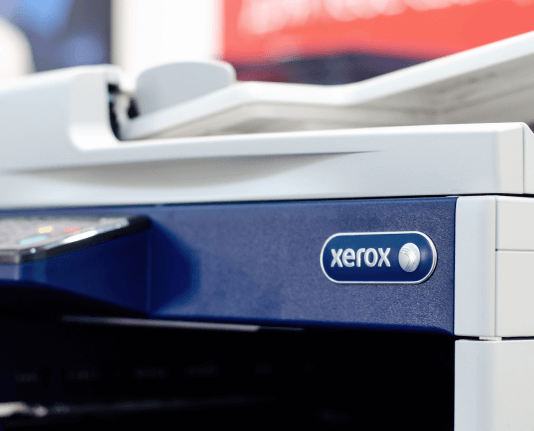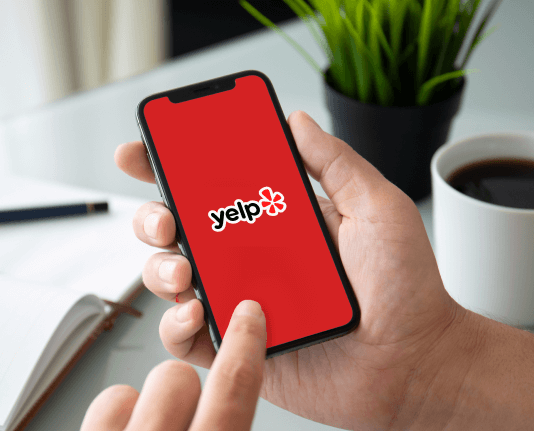Streamline Your Rfp Management Software for Effortless Document Signing
Move your business forward with the airSlate SignNow eSignature solution
Add your legally binding signature
Integrate via API
Send conditional documents
Share documents via an invite link
Save time with reusable templates
Improve team collaboration
See airSlate SignNow eSignatures in action
airSlate SignNow solutions for better efficiency
Our user reviews speak for themselves






Why choose airSlate SignNow
-
Free 7-day trial. Choose the plan you need and try it risk-free.
-
Honest pricing for full-featured plans. airSlate SignNow offers subscription plans with no overages or hidden fees at renewal.
-
Enterprise-grade security. airSlate SignNow helps you comply with global security standards.

airSlate SignNow features that users love
Get legally-binding signatures now!
FAQs
-
What is RFP management software, and how can it benefit my business?
RFP management software streamlines the process of creating, distributing, and managing Requests for Proposals (RFPs). By automating repetitive tasks and centralizing communication, your team can save time, reduce errors, and enhance collaboration, making it easier to identify the best suppliers for your needs. -
How does airSlate SignNow's RFP management software improve the proposal process?
airSlate SignNow's RFP management software simplifies the proposal process by providing templates and tracking features that ensure nothing is overlooked. This efficiency empowers your team to focus on crafting compelling proposals, thus increasing the chances of winning bids and expanding your business opportunities. -
What features are included in airSlate SignNow's RFP management software?
Our RFP management software includes key features such as customizable templates, progress tracking, analytics, and document sharing capabilities. These tools give teams the functionality needed to manage RFPs effectively, ensuring a smooth workflow from start to finish. -
Is airSlate SignNow's RFP management software user-friendly?
Yes, airSlate SignNow's RFP management software is designed with user experience in mind. Its intuitive interface allows teams to collaborate easily, regardless of their technical proficiency, ensuring that everyone can contribute to the RFP process without unnecessary complications. -
What are the pricing options for airSlate SignNow's RFP management software?
airSlate SignNow offers flexible pricing plans for its RFP management software to accommodate businesses of all sizes. Potential customers can choose from monthly or annual subscriptions, allowing you to select the option that best fits your budget and organizational requirements. -
Can airSlate SignNow's RFP management software integrate with other tools?
Absolutely! Our RFP management software integrates seamlessly with various collaboration and document management tools, enhancing your existing tech stack. This capability ensures that your team can work efficiently within your preferred platforms while still benefiting from robust RFP management. -
How secure is the data within airSlate SignNow's RFP management software?
Security is a priority for airSlate SignNow's RFP management software. We implement industry-standard encryption protocols and data protection measures to safeguard sensitive information, ensuring your RFPs are secure while allowing you to collaborate with confidence. -
What customer support options are available for airSlate SignNow's RFP management software?
airSlate SignNow provides comprehensive customer support for our RFP management software. Users can access a rich resource center with guides and tutorials, and our dedicated support team is available through chat, email, or phone to assist with any queries or issues.
What active users are saying — rfp management software
Related searches to Streamline your rfp management software for effortless document signing
Rfp management software
if you have worked in any it service based industry I am pretty sure you might have heard about these terms time and again RFI RFP RFQ sow blue but being in a technical role sometimes we don't understand what exactly it is how exactly it comes into picture and what exactly transformed these things into actual technical work which we do so in this video I'll try to give you an overview of these processes what exactly it does to enable the business to do the technical stuff which we do and then earn money out of it so let's understand these terms with the help of some simple examples and I'm pretty sure by the end of this video you will be in a position wherein If your manager comes and tells you that we have got the file you'll understand how friends before we start with our example let's understand few Basics Whenever there is a transaction a business transaction there is always a customer and a supplier or a vendor how what does that mean if you go to the market to buy anything you go to a vendor's shop and you buy this stuff so what exactly is happening is you are purchasing something or we also call it procurement so this is all comes under procurement process suppose this is the customer uh who works on this Excel Report with VBA macros to automate certain stuff but now he wants to show the data within the next within this Excel to the Senior Management and he wants this to be converted into more user-friendly bi business intelligence report where he could show the data on a trend line on a pie chart like that and then he could automate this to be sent over an email to all the business stakeholders now that's the requirement he has and now he wants someone some supplier to do this job for him so right now just imagine that he has a vague understanding of what he wants but he is not sure of whether he wants to buy something or not so what he will do is under the first step which is RFI and when I say first step not necessarily it is followed in sequence but I am just trying to give you a very basic understanding of this that's why I'm taking it as a step-by-step approach so under RFI which is called as request for information the customer will go into the market to explore the option he has so far he has not made up his mind that whether he is going for a certain solution not so he will float the RFI with some uh open-ended questions as to if this is kind of the problem I have how you would resolve it okay and if these will be some open-ended questions about what kind of options I have and what kind of options I can go for so RFI by nature is casual um it is like asking asking your friends what I need to do in my life it's so generic okay so then your friends would say I don't know what you want to do in life tell me more about it maybe you could try this you could try that and all that right so similarly customer at this point of time does not know exactly what is the solution for his business need but these rfis would open that channel and he would start thinking more clearly as to what could be the potential solutions for his business problem and that's why these set of questionnaires are sent to the suppliers and they just reply back within a time frame or to all those queries and once those queries are sent back to the customer customer has a clear idea of the potential solutions they might have for this particular requirement so the advantage with RFI is it is a very fast method to get the information you need from the market before you take a more serious decision or a serious look towards your solution so once you have RFI and once you have received a response for that particular RFI then you go to the next step and when I say next step again I am saying you could skip certain steps it depends on the relationship you have with a prospective customer as a supplier so there are scenarios where RFI does not take place at all people know each other the customer knows the supplier so well that he or she could directly go to the RFP stage but more importantly what is RFP RFP stands for request for proposal so in rfps thing starts to get more serious because now the customer is taking a serious look on on whether he needs to go for a certain supplier or not this is the point where the decision would be made and that's why it is more formal and more detailed the RFP process which is request for proposal process is more detailed you might have to as a supplier come up with your own proposal prepare a presentation to Showcase how you would meet the customer needs and that's where the your brms your business relationship managers your bdms business development managers your sales executive and your Tech Team come together to form a proposal which could be sent to the customer so that customer could make that advised decision thing which differentiates RFI with rfps in RFP you expect the vendor to share the unique strategies they would opt for in order to deliver you a better solution so let's take an example suppose this is a vendor one vendor 2 and vendor 3. all three of these could take this problem statement and come up with their own specific solution so for example a vendor one might come up with a solution wherein he says that okay let's migrate this into a power bi because both are Microsoft products wherein vendor 2 comes up and says that okay you're talking about this Microsoft Excel but what else you want to automate in this area is this the only report do you want a Cloud solution to be built where you can run all your analytics workloads including this Microsoft Excel there it is more Visionary right they are thinking far ahead and all that will be part of your RFP discussion there would be a timeline given to you you have to form your proposal and then present it to the customer and ask certain questions if you if you wish to and then propose this solution which you have come up with vendor 3 vendor 3 could come up with a completely different approach so it is more about analyzing which vendor has that Vision which aligns to your vision as far as delivering this solution is concerned so RFP enables the customer to take a very wise informed decision so once your RFP phase is over you go to the next phase which is RFQ which is called as request for quotation so suppose if you want to buy a laptop you go to three different shops to ask for quotation you need to understand what exactly it costs to buy a laptop of a certain configuration RFQ is the stage where customer understand how much it will cost them to get the solution and many a times RFP and RFQ are combined together so not necessarily it would be the third step it could be combined with your RFQ wherein in your proposal you also share how much it would cost but the idea is it has to be a structured breakdown of how much time how much effort how much cost it will take to deliver this and how much you would charge the customer and that's where that would impact the purchasing decision sometimes it might happen that vendor 1 has a very good solution for the customer but it's very costly where in Vendor 2 is just about doing the job but then it is falling within the financial budget for allocated for this particular project so in in those cases this could be a game changer because eventually everything boils down to the cost and the price of the product right so once RFI RFQ RFP all these processes purchasing processes are over we expect to come out as a winner from the supplier side so suppose customer chooses supplier 2 or vendor 2 as a prospective winner of this particular deal then comes the next phase and that phase is to prepare a statement of work which is also called as Sao or sow a lot of times you might have seen the Sao it is a contractual agreement between the customer and the supplier on the exact deliverables that needs to be delivered you you would have your you know your legal obligations as a supplier you would have your in scope you would precisely highlight that okay these are the activities we'll deliver as a part of the project these are the things which are out of Scopes these are the assumptions and the dependencies which this which the customer needs to take care of for example in this particular case sow might say that the functional knowledge of how these VBA macros and Excel uh are being created is the responsibility of the customer to give so maybe the customer has to align his business analyst to work with the vendor team I'm just giving an example so w is a very serious business guys because this has legal implications now you are going into a legal contract and that legal contract binds the customer and the supplier together for the term of that contract which is stated in sow or south your legal team has to validate what has been agreed upon and what could potentially result in some sort of a legal trouble if if in case customer is not happy so when the sow is being signed by the customer and the supplier you are ready to start going you so potentially when your RFI RFP rfu process is ongoing your sales pre-sales team your Consulting team would be heavily involved your brm's business relationship managers would be heavily involved Your solution Enterprise Architects solution Architects from your pre-sales team would be involved but once this whole sales uh process or your this whole procurement process is over and once it comes to the delivery phase your delivery team has to get involved and that's where the your project manager will come in understand what is the requirement and then starts delivering it as per the scope so generally as technologists as technical people we we do work as a part of a statement of work but we don't understand it because maybe we are quite Junior so we are not we are not involved in those discussions sometimes as you grow up the ladder you start understanding you start helping your seniors prepare the statement of work so it is just the process but as a as a newbie in IT industry as a person who's just entered into the IT industry if you know these things which personally I took ages to understand I was always told that okay these are the deliverers you have to deliver but I never understood the business context behind it so sometimes it happens that being the technical people we start working on the deliverables but sometimes we do not need the scope sometimes we go out of the scope although this is the responsibility of the project manager or the delivery manager but then you should also have the visibility of what is written in the statement of work you could ask for it it might be shared with you it might not be shared with you but the moment you ask for it it will show that you know what you are doing and you know what you are talking so I hope guys this video was a useful one I I know this is not a technical video but as I said itk funded channel is about making it interesting for everyone and this includes these kind of processes as well so until next time guys keep learning keep sharing all your knowledge and yes keep hustling bye for now foreign
Show moreFind out other rfp management software
- Boost eSignature Legitimateness for Government in ...
- Boost eSignature Legitimateness for Government in India ...
- Boost eSignature Legitimateness for Government in ...
- Unlocking eSignature Legitimateness for Government in ...
- Unlocking the Power of eSignature Legitimateness for ...
- Enhance eSignature Legitimateness for Healthcare in ...
- Unlock eSignature Legitimateness for Healthcare in ...
- Unlocking eSignature Legitimacy for Healthcare in ...
- Achieve eSignature Legitimateness for Healthcare in ...
- Unlocking eSignature Legitimateness for Healthcare in ...
- Unlocking eSignature Legitimacy for Healthcare in India
- Boost eSignature Legitimateness for Healthcare in UAE ...
- ESignature Legitimateness for Higher Education in ...
- Unlocking eSignature Legitimateness for Healthcare in ...
- Unlocking eSignature Legitimateness for Higher ...
- Enhance eSignature Legitimateness for Higher Education ...
- Unlocking eSignature Legitimateness for Higher ...
- Maximize eSignature Legitimateness for Higher Education ...
- Unlock the Potential of eSignature Legitimateness for ...
- ESignature Legitimateness for Higher Education in UAE: ...






























